Joint post-war European combat aircraft projects (part of 3)
The plane SEPECAT Jaguar, designed as a single universal training and combat platform, as it turned out in the process of testing, did not fit the role of a training Sparky. The Anglo-French consortium failed to create a supersonic training aircraft of increased flight training similar to the American T-38 Talon. As a result, the TCB based on the Jaguar fighter-bomber was safely buried. Double modifications, built approximately in the ratio 2: 10, were mainly used to train pilots of fighter-bombers in combat squadrons and test centers when developing various systems and new types of aircraft weapons. Supersonic "Jaguar" was too expensive and difficult for the role of TCB in the Air Force of Great Britain and France.
As a result, each side took up an independent search for solutions to the problem. At the same time there was a revision of views on the technical characteristics and appearance of the jet trainer aircraft. Based on the real capabilities of their budgets, the military came to the conclusion that it is possible to train pilots in relatively inexpensive subsonic machines. And for specialized training for each type of supersonic combat aircraft it is more rational to use the double version.
For Royal Air Force, the Hawker Siddeley company took up the creation of a jet training machine, which later became widely known under the name Hawk. And the French in the early 70s decided to create a jet fusion jointly with the Germans. The main reason for this was the desire to share financial and technical risks. In addition, French aircraft manufacturers in the late 60s and early 70s were overloaded with orders for the Jaguars, Mirages and deck-based Etandars, and aviation Germany's industry was in dire need of aviation orders. Also, the Luftwaffe in the future needed a modern, inexpensive direct-support aircraft to replace the light fighter-bomber G.91R-3. In the first half of the 60s, the F-104G Starfighter was considered as a promising strike machine in Germany, but the high accident rate of this aircraft led to the fact that the Germans wanted to get a twin-engine aircraft optimized for flying at low altitudes.
In 1968, the parties agreed on technical requirements for the aircraft named Alpha Jet. In the second half of 1969, an agreement was reached on joint production of 400 aircraft (for 200 machines in each country). In reviewing the results of the competition in July 1970, preference was given to projects submitted by French companies Dassault, Breguet and West German Dornier. On the basis of the Breguet Br.126 and Dornier P.375 projects, the Alpha Jet multipurpose subsonic aircraft was designed. The approval of the project took place in February 1972.
Requirements for the tactical and technical characteristics of a light strike aircraft were developed on the basis of the peculiarities of the hostilities in the European theater of operations, where it was assumed the massive use of armored vehicles and the presence of a powerful military air defense. And the course of the hostilities itself should have been distinguished by its dynamism and transience, as well as the need to combat the landings and block the enemy’s reserves approach.
As mentioned in the second part, dedicated to the fighter-bomber "Jaguar", in 1971, the French company Dassaul absorbed its rival Breguet. As a result, aviation giant Dassault Aviation became the only producer of Alpha Jet in France. The construction of Alpha Jet in Germany was entrusted to Dornier.
The military departments of France and Germany ordered two prototypes from their aircraft manufacturers for flight and static tests. The first 26 in October, 1973, in the Istres test center, took to air the prototype built in France. A German aircraft assembled at the Dornier plant took off on 9 on January 1974 of the year with GDP in Oberpfaffenhofen. Belgium also joined the project at the end of 1973.
Tests lasted three years. In the course of fine-tuning in order to obtain optimal controllability at low altitudes and moderate approach speed, changes were made to the control system and wing mechanization. Initially, the Germans planned to use the General Electric J5 American turbojet engines that had proven themselves on the F-38 and TC-T-85 fighter jets, but the French, fearing dependence on the United States when exporting airplanes, insisted on a new own SNECMA Turbomeca Larzac engine. To increase the speed and maximum speed of flight, the Larzac 04-C1 engines were replaced during the tests with Larzac 04-C6, each with a kgN load of kgf. Engine air intakes are located on both sides of the fuselage.
In the process of finalizing the aircraft received a simple and reliable hydraulic control system, consisting of two duplicated subsystems. The control system provides excellent piloting in all ranges of heights and speeds. Test-pilots noted that it was difficult to drive the plane into a corkscrew, and it would leave it on its own when removing effort from the control stick and pedals. Much attention was paid to the strength of the aircraft, its maximum overload calculated from + 12 to -6 units. During test flights, it was repeatedly possible to accelerate the plane to supersonic speed, while the Alpha Jet was adequately controlled and did not show a tendency to turn over or to delay in a dive.
Alpha Jet has a high-swept wing, a double tandem cockpit with ejection Martin-Baker MK.4 seats. The layout and placement of the cockpit provided a good forward-down view. The seat of the second member of the crew is located with some excess over the front, which provides an overview and allows you to independently carry out landing.
At the same time, the plane turned out to be quite light, the normal take-off weight - 5000 kg, the maximum - 8000 kg. Maximum speed at high altitude without external suspensions - 930 km / h. A combat load of up to 2500 kg was placed on 5 suspension units. Each node located under the wing is designed for maximum load up to 665 kg, and ventral - up to 335 kg. The combat radius, depending on the flight profile and the mass of the combat load, ranged from 390 to 1000 km. When performing reconnaissance missions, the radius of action when using suspended four fuel tanks with a capacity of 310 liters can reach 1300 km.
Initially, a fairly simple avionics was foreseen, allowing operation in conditions of good visibility and, predominantly, during daylight hours. In the process of fine-tuning, the aircraft received a radio compass, a TACAN equipment and a set of equipment for blind landing, which made it possible to use the aircraft in bad weather even at night. However, the capabilities of the sighting system remained quite modest. An attack aircraft can strike only if there is sufficient visual visibility of targets. On the shock version, designed for the "Luftwaffe" was installed laser rangefinder-pointer. Control system weapons allows you to automatically calculate the point of impact during the bombing, the launch of the NAR and the firing of guns at ground and air targets. Communications equipment included VHF and HF radio stations. The aircraft had the ability to basing on field unpaved airfields. He did not require sophisticated ground equipment, and the time of re-combat sortie was reduced to a minimum. To shorten the length of the landing run, the German Alpha Jet A had landing hooks that clung to the landing for brake cable systems, similar to those used in carrier-based aircraft.
The French Air Force received the first serial training Alpha Jet E at the end of 1977 of the year. In the middle of 1979, Alfa Jet began to replace American TCB T-33 in training squadrons. In the same year, the French aerobatic team Patrouille de France moved to these planes. Visually, French training aircraft differed from German light attack aircraft in a rounded nose section.
Alpha Jet E aircraft of the French aerobatic team Patrouille de France
The first serial Alpha Jet A (combat), built in Germany, took off 12 April 1978. Alpha Jet Close Support Version (Alpha Jet version to isolate the battlefield and air support) was adopted for the West German attack aircraft. The double light attack aircraft received three light bomber squadrons and the West German training unit deployed in Portugal at the Beja airbase.
In July, 1978, the company Dassault signed an agreement with the American corporation Lockheed on the production of Alpha Jet in the USA. The Franco-German TCB was supposed to be used to train US Navy carrier pilots. Changes included the strengthening of the chassis, the installation of a more durable landing hook, as well as the installation of equipment for landing on an aircraft carrier and sea communications equipment.
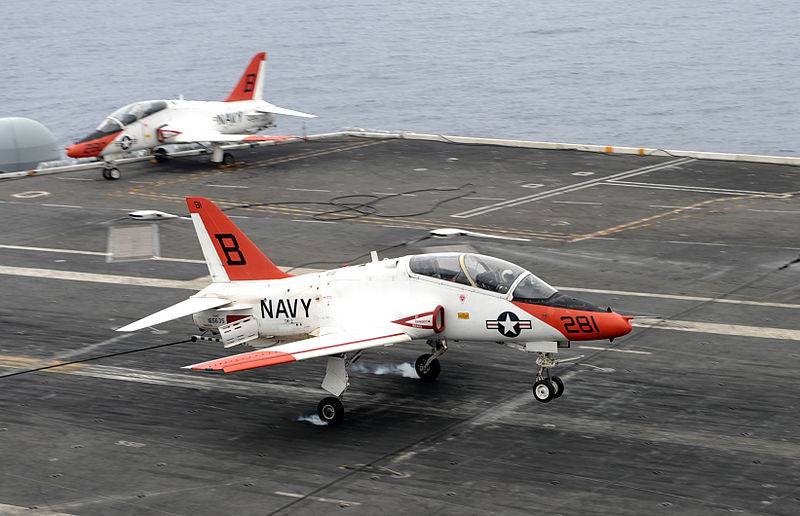
TCB T-45 on the deck of the USS aircraft carrier Dwight D. Eisenhower (CVN-69)
However, in a competition announced by the American fleet, won the British modified TCB Hawker Siddeley Hawk. This aircraft under the designation T-45 Goshawk was manufactured in the United States by McDonnell Douglas.
In total, the French and German Air Forces received 176 and 175 aircraft, respectively. The last aircraft were delivered to the Luftwaffe at the start of the 1983 of the year, deliveries to the French Air Force ended in the 1985 year. In a month, 5-6 machines were usually assembled, except for French and German companies, the production facilities of the fuselage and aircraft assembly involved the production capacity of the Belgian SABCA enterprise.
Belgian Air Force from 1978 to 1980 Received two batches of Alpha Jet 1 for the 16 and 17 units in a training configuration that is almost the same as that ordered by the French Air Force. In the middle of 90-x - the beginning of 2000-x, all Belgian cars underwent restoration repair and upgrading to the level of Alpha Jet 1В +. The airplanes received an updated avionics: new navigation systems with a laser gyroscope and a GPS receiver, a HUD, a new communications equipment for recording flight parameters. It is expected that the Belgian Alpha Jet will remain in service until 2018 year. At the moment, Belgium-owned training aircraft are based in France.
The onboard equipment and armament of the French and German cars differed greatly due to the fact that the command of the "Luftwaffe" by that time had refused to train military pilots in their possession. Initially, the Germans wanted to train pilots in France, but since France withdrew from the military structure of NATO at that time, this provoked a sharp reaction in the United States, and German pilots were trained overseas under the guidance of American instructors.
In the German Air Force "Alpha Jet" was mainly used as a light strike aircraft with an improved aiming and navigation complex compared to the French vehicles. Another notable difference between the Luftwaffe aircraft was the 27-mm Mauser VK 27 cannon (150 rounds of ammunition) in the suspended ventral container.

On French aircraft, the 30-mm DEFA 553 cannon suspension was also possible in the ventral container. But in reality, vehicles with weapons in the French Air Force almost never used. The Jaguars and the Mirage were quite enough to perform the shock tasks. For this reason, the set of weapons of the French Alpha Jet E looked much more modest and was mainly intended for the training of combat use.
The armament placed on the external nodes of the suspension of West German aircraft was very diverse. It can solve a wide range of problems. The West German command, when selecting the composition of the Alpha Jet weapons, paid great attention to the anti-tank orientation. To fight the Soviet tanks designed cartridges with cumulative bombs and anti-tank mines and NAR. In addition to anti-tank weapons, the attack aircraft is capable of carrying suspension containers with 7,62-12,7-mm machine guns, air bombs weighing up to 450 kg, napalm tanks and even sea mines.
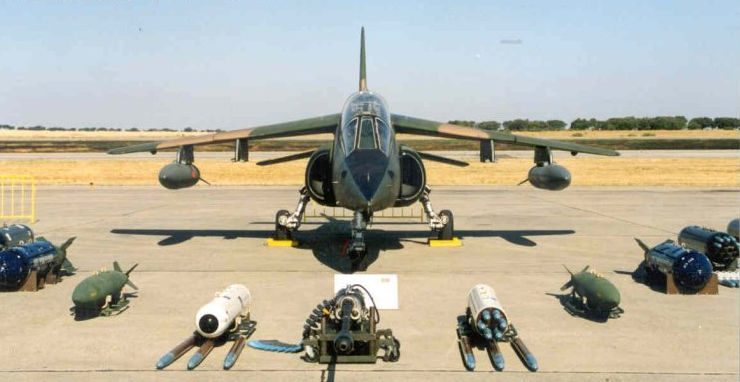
A double cabin on a light aircraft of direct aviation support is not a typical phenomenon. This makes the aircraft heavier, reduces its flight data and the weight of the combat load. In case of abandonment of the second crew member, the released mass reserve could be directed to increase the security level or increase the capacity of the fuel tanks. The single version of the light attack aircraft (Alpha Jet C) with an armored cab and a straight wing was considered by Dornier, but the matter did not progress beyond the project. In terms of its capabilities, the aircraft was supposed to approach the Soviet Su-25 attack aircraft. The armored protection of the single cabin should have resisted the armor-piercing bullets of 12,7 caliber mm. However, the overall survivability of the aircraft remained at the level of the two-seater.
Most likely, the Germans, having adopted a two-seater light attack aircraft, simply did not want to spend money on reworking it. On the other hand, the presence of aircraft controls in the second cockpit somewhat increases survivability, since in case of failure of the main pilot, the second can take control. In addition, as shown by the experience of Vietnam, the chances of double cars to avoid the defeat of anti-aircraft artillery fire and dodge the anti-aircraft missiles are significantly higher. Since the pilot has a significantly reduced field of view during a ground target attack, the second member of the crew can inform about the danger at the time, which gives a reserve of time for the anti-aircraft or anti-missile maneuver.
Light double attack aircraft was well received by technical and flight personnel. In the Luftwaffe, he became a worthy change to the G.91R-3 fighter-bomber. Alpha Jet had a maximum speed comparable to its predecessor, but at the same time surpassed G.91 in combat effectiveness. According to the characteristics of maneuverability at low altitudes, the Alpha Jet was significantly superior to all combat aircraft of direct NATO air support, including the American A-10 Thunderbolt II attack aircraft.
Light attack aircraft Alpha Jet A and supersonic F-104G fighter during joint maneuvering
Test air battles with F-104G, Mirage III, F-5E, F-16A fighters showed that a light attack aircraft under the control of an experienced pilot is a very difficult enemy in melee air combat. In all cases, when the crew of the Alpha Jet was able to notice the fighter on time, he successfully evaded the attack, turning into a turn at low speed. Moreover, if the fighter pilot tried to repeat the maneuver and was drawn into the battle on turns, then he himself soon came under attack. And the slower the speed, the greater the advantage of the attack aircraft in maneuverability on the horizontal. With flaps and chassis retracted, the Alpha Jet stall begins at a speed of about 185 km / h. According to the characteristics of the horizontal maneuverability with the Alpha Jet, only the British Harrier VTOL helicopter could compete, but with comparable combat effectiveness when operating on ground targets, the cost of operation and the time to prepare for a combat departure from the Harrier were much higher.
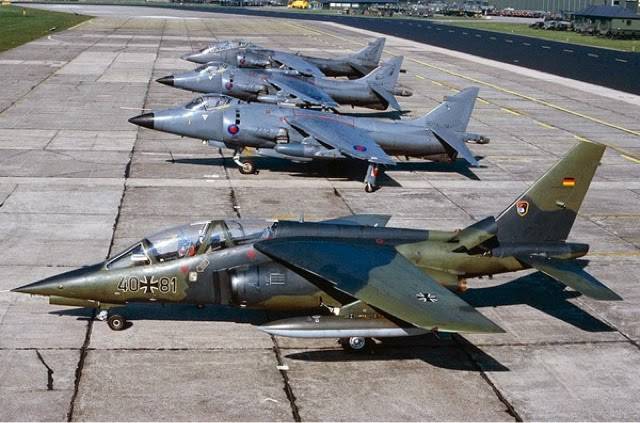
West German light attack aircraft "Alpha Jet" and the British VTOL "Harrier" during a joint exercise
Good flight and operational characteristics, combined with sufficiently powerful and diverse weapons, made it possible to successfully accomplish the tasks of direct air support of ground forces, isolation of the battlefield, deprivation of the possibility of pulling up reserves and delivering ammunition to the enemy. Particular attention was paid to the conduct of aerial reconnaissance in the operational depth, for which containers with visual and electronic intelligence equipment were suspended. In addition, Alpha Jet could be involved in attacking headquarters and command posts, radar and air defense systems, airfields, ammunition depots and fuel, and other important military targets located in the operational depth.
High maneuverability, ease of management, and the presence of an observer who timely informed about the threats, should have ensured increased survival during operations at low altitudes. At the same time, Western experts noted that the light attack aircraft during low-level operations were vulnerable when suddenly fired by Soviet short-range air defense systems: Strela-10, Osa, and at medium altitudes for medium-range air systems "Cube" and "A circle". In addition, the actual experience of fighting in the Middle East has shown that low altitude is not a defense against the Shilka ZSU-23-4.
An important advantage of the “Alpha Jet” is a good fitness for action from small unpaved runways. This allows attackers, if necessary, to be based in close proximity to the front line, to get out of attack, to respond promptly to requests from their troops in need of air support. Despite the seemingly modest flight data on the background of multi-ton supersonic machines, the Alpha Jet fully complied with the requirements set for it and showed very high indicators on the “cost-effectiveness” criterion.
In the middle of the 80's, the Luftwaffe launched the first phase of the Alpha Jet upgrade program to improve combat performance and survival over the battlefield. Measures were taken to reduce the radar and thermal signatures. The aircraft received devices for shooting heat traps, suspension containers with American jamming equipment and a new navigation system. The survivability of the aircraft during combat damage was initially not bad. Thanks to the well thought-out layout, the duplicated hydraulic system and the separated engines, even if the Strela-2 ATGM was hit, the plane had a chance to return to its airfield, but tanks and fuel lines required additional protection. After the weapons system was finalized, German aircraft could use AGM-65 Maverick laser guided missiles to destroy point targets, and use AIM-9 Sidewinder and Matra Magic missiles in defensive air combat with fighters or against helicopters.
After the collapse of the eastern bloc and the unification of Germany, the Luftwaffe were reduced. The need for a light subsonic anti-tank attack aircraft became unclear. The military department of the Federal Republic of Germany in 1992 decided to reduce more than half of the fleet of combat aircraft, leaving the entire 45 two-man attack aircraft in the ranks.
The reduction began as early as next year. In the middle of 1993, the 50 aircraft were transferred to Portugal to replace the outgoing G.91R-3, TCB G.91T-3 and T-38.
In 1999, Germany sold 25 Alpha Jet to Thailand for a purely symbolic $ 30 000 per unit. In the Royal Thai Air Force double attack aircraft replaced the American OV-10 Bronco. The aircraft were intended to conduct air patrols of borders. Repair of aircraft, replacement of communication equipment and hauling cost Thailand more expensive than purchasing used machines.
In 2000, the British Defense Diversification Agency (DDA), the Defense Evaluation and Research Agency, expressed a desire to acquire 12 German aircraft, which is explained by the lack of RAF TCB "Hoke" in the RAF. Currently, the aircraft modified Alpha Jet A located at Boscom-Down air base and are used in all sorts of tests and tests of aircraft equipment and ground systems. A few more planes were purchased by the British company QinetiQ, which specializes in defense research and development of civilian security systems.
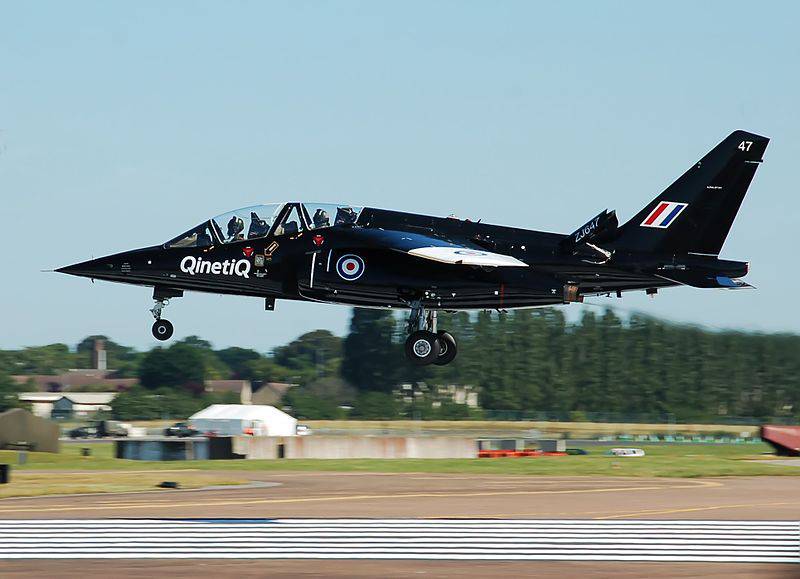
The French treated their “backs” more carefully than the Germans, so far, the French Air Force has 90 training machines. The aircraft has proven itself over the long years of operation; thousands of French and foreign pilots received flight training on it. However, features such as excellent handling, and the fact that the plane forgave even gross errors, was not always a blessing. As is known, often, disadvantages are a continuation of merits. Many commanders of the fighter squadrons noted that after the flights to the Alpha Jet train station, some pilots relaxed and took liberties, which during flights on combat fighters led to flight incidents.
In the middle of 90's, the French Air Force explored the Alpha Jet 3 ATS program (Advanced Training System, Advanced Training System). This aircraft was created as an effective simulator with a programmable multifunctional control and a “glass” cabin and modernized control, communication and navigation systems. The Alpha Jet 3 ATS was supposed to train pilots of modern and advanced fighters. However, "Alpha Jet" is already largely obsolete, and most of the machines had a limited resource. As a result, the cardinal modernization was recognized as too costly, and during the factory repairs, most of the French cars were brought to the level of the corresponding Belgian Alpha Jet 1В +. Currently, the most likely candidate for the replacement of "Alpha Jet" in France is the Italian TCM M-346 Master.
The successful ratio of cost-effectiveness and the ability to use the aircraft, both as a light attack aircraft and as a training aircraft of increased flight training made it interesting for foreign buyers. This car was bought for its air forces of 8 countries, although the cost of the combat training aircraft was not low - 4,5 million dollars in mid-80 prices.
However, by the beginning of the 80-x, the Alpha Jetta sighting and navigation complex no longer met modern requirements and the aircraft was upgraded to increase its attractiveness to foreign customers. However, not all foreign buyers needed a light strike aircraft, Egypt in 1978 entered into an agreement with France on the supply of 30 aircraft to Alpha Jet MS and bought a production license. The aircraft were assembled from sets supplied by Dassault at the Egyptian branch of the Arab Industrialization Organization joint venture funded by rich Middle Eastern monarchies - Qatar, the UAE and Saudi Arabia.
In 1982, Egypt ordered 15 aircraft modification Alpha Jet MS2. Most of the 45 Egyptian MS2 was not built from scratch, but was converted from Alpha Jet MS. On the upgraded car, which did not go into the series in France, the shock capabilities and flight characteristics were significantly improved. The Alpha Jet MS2 has received the new high-precision inertial navigation system SAGEM Uliss 81 INS, the SFIM gyromagnetic compass, the TRT radar altimeter, the CSF closed communications equipment, the HUD projection indicator, and the TMV 630 laser range finder, in the forward fuselage. The aircraft was equipped with more powerful Larzac 04-C20 engines with kgn thrust 1440. Also the recipient of this modification was Cameroon (7 machines).
If the first Egyptian Alpha Jet MS were intended primarily for training and training, the Alpha Jet MS2 had an aiming and navigation complex with its full-fledged combat aircraft. The number of suspension nodes has increased to seven, and the combat load on the 500 kg. In the Egyptian Air Force "Alpha Jet" replaced the hopelessly outdated MiG-17 used in the role of attack aircraft. However, time takes its toll, according to Military Balance 2016, currently in the Egyptian Air Force there are about 40 aircraft Alpha Jet MS2. As a replacement for the outdated Alfa Jet, Egyptians consider combat training aircraft: the British Hawk 200 series, the Italian M-346 and the Russian Yak-130.
The second in the Middle East Alfa Jet Park is owned by the United Arab Emirates. But, unlike Egypt, the Air Force of the Emirates, did not receive new Alpha Jet A transferred to the Luftwaffe. France was the main supplier of this type of aircraft. At various times, in addition to the above countries, Alpha Jet E aircraft were shipped to Côte d'Ivoire (7 aircraft), Morocco (24), Nigeria (24), Qatar (6), Togo (5). The intense competition in the global arms market was made up of Czechoslovakian L-39 and British Hawk. Therefore, the new "Alpha Jets" were supplied mainly to countries that had strong military and political ties with France.
Unlike the Jaguar fighter-bomber, the combat career of the Alpha Jett was not so intense, but it was also possible for him to “smell the gunpowder”. The most interesting thing is that the vehicles of the modification Alpha Jet E, which had limited combat capabilities compared to the German Alpha Jet A, fought. The combat training aircraft of the Royal Moroccan Air Force were the first to enter the battle. They attacked the front units of the Polisario during the war in Western Sahara, which lasted from 1975 to 1991. One aircraft was hit by anti-aircraft fire in December 1985 of the year.
Nigeria used its light attack aircraft to support the peacekeeping contingent of West African states deployed at the beginning of the 90s in Liberia-seized civil war. The Alpha Jets of the Nigerian Air Force effectively bombed the rebel columns of the National Patriotic Front of Liberia (NPFL) and fought against shipping. In total, acting on communications, the Nigerian attack aircraft for several years made about 300 combat missions. The aircraft repeatedly suffered damage from anti-aircraft fire, but there was no irreparable loss. According to information published in the media, they were mainly flown by “contractors” from France, Belgium and South Africa. Thanks to air supremacy, it was possible to disrupt a number of rebel offensive operations and impede their supply, which ultimately led to the defeat of the NPFL, headed by Charles Taylor.
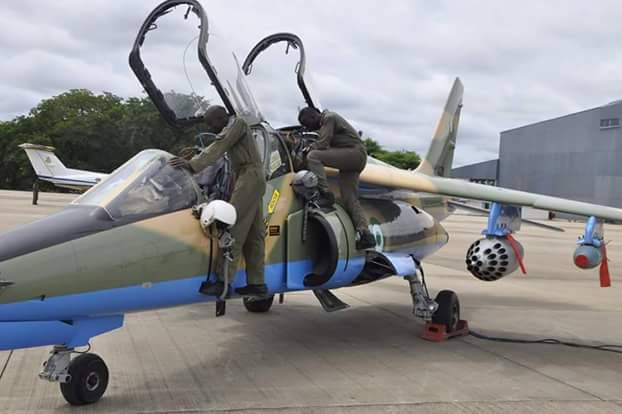
Until 2013, the Nigerian Air Force survived 13 combat training aircraft. But almost all of them were shackled to the ground due to faults. It was at this time that Islamic militants Boko Haaram became more active in the country, and the Nigerian government had to make considerable efforts to return the attack aircraft to service. So, at the enterprises of the Nigerian company IVM, which is mainly engaged in the licensed production of cars, the production of some spare parts was organized. In addition, Alfa Jet, which are in varying degrees of operability, were procured around the world. Some of them managed to be restored, others became a source of spare parts.
Airplanes bought from private owners were “demilitarized,” that is, sights and weapons were removed from them. The Nigerians, with the help of foreign specialists, succeeded in returning several vehicles to the system, arming them with UB-32 units with Soviet-made 57-mm NAR. In September, 2014, two restored Alpha Jeta, supporting the actions of the Nigerian government forces, attacked targets in the area of the city of Bama, captured by extremists. In this case, one "Alpha Jet" was hit by anti-aircraft fire.
It is not known whether the Alpha Jet of the air forces of other countries applied in the fighting, but in the recent past the Thai Air Force combat aircraft attacked armed groups of drug dealers in the so-called Golden Triangle located on the border of Thailand, Myanmar and Laos. It is very likely that the former German Alpha Jet E could be used in the air raids. The Egyptian Air Force also regularly participates in operations against the Islamists on the Sinai Peninsula. The double Alpha Jet MS2, capable of being in the air for a long time, is almost ideal for isolating the area of the antiterrorist operation.
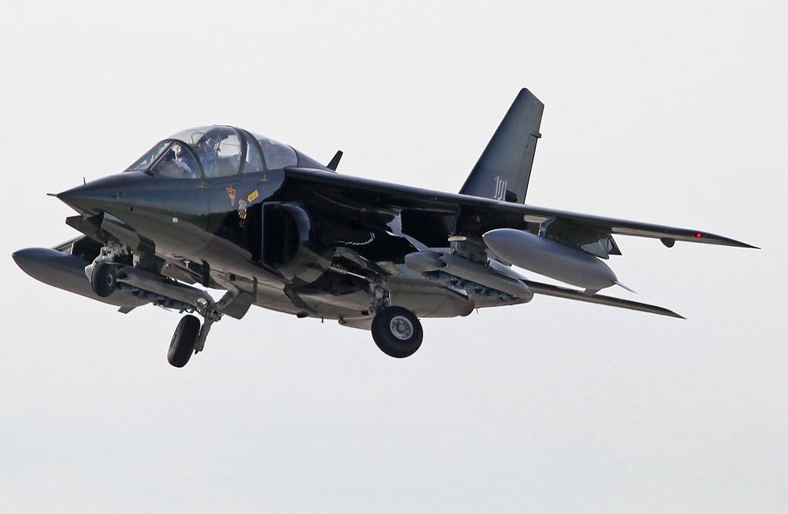
A significant number of demilitarized Alfa Jet is operated by private owners and civilian structures. So, in the Ames Research Center (Research Center Ames, ARC) in California, owned by NASA, there is one disarmed Alpha Jet, used in various scientific experiments. Due to low operating costs, affordable price and good flight data, Alpha Jet is popular in aerobatic teams around the world and among private aviation companies engaged in the provision of services in the field of combat training. The most well-known companies of this kind, in whose fleet there are Alpha Jet aircraft, are the American Air USA, the Canadian Top Aces and Discovery Air.
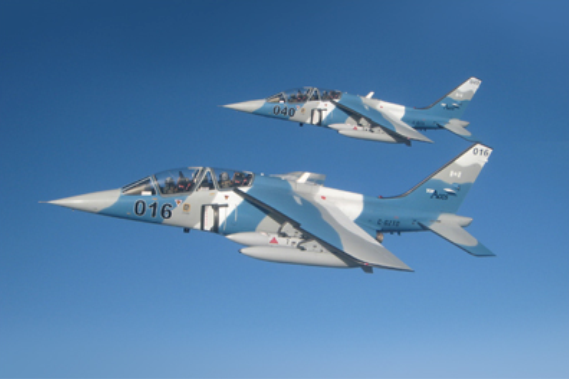
Aircraft of private aviation companies are involved in the training of air defense calculations and fighter pilots. They act as simulators of aerial targets in interception missions, as well as in training maneuverable aerial combat. Often, the maneuverable characteristics of the Alpha Jet aircraft put the pilots of the F-15, F-16 and F / A-18 fighters in a very difficult position. According to the comments of the Canadian CF-18 pilots, it was an unpleasant discovery for them that the old subsonic Alpha Jet is very difficult to drive into the sight on the turns.
Currently, the life of the aircraft Alpha Jet in the military service ends, and in the next few years they will write off all of them. But, apparently, the restored aircraft, which are in private hands, will fly for a long time. Light attack aircraft, once the symbol of the Cold War, have now become the subject of historical heritage.
To be continued ...
Based on:
http://www.militaryfactory.com/aircraft/
http://www.airvectors.net/avalpha.html
http://worldweapon.ru/sam/alj.php
- Linnik Sergey
- Joint post-war European combat aircraft projects (part of 1)
Joint post-war European combat aircraft projects (part of 2)
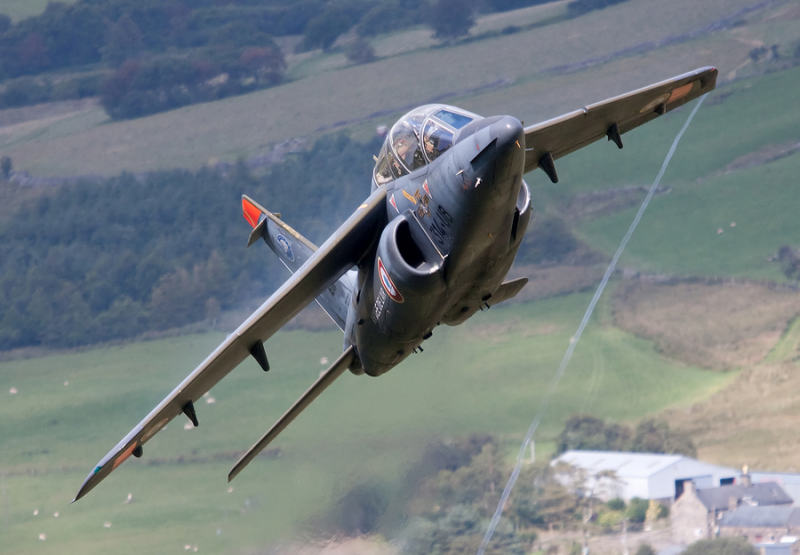

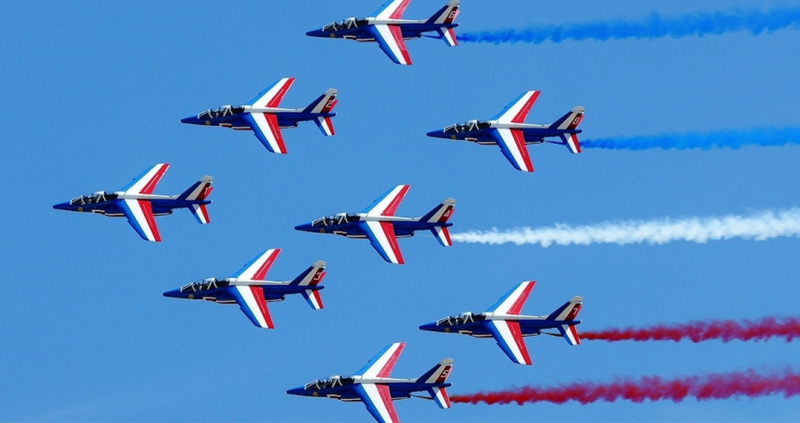
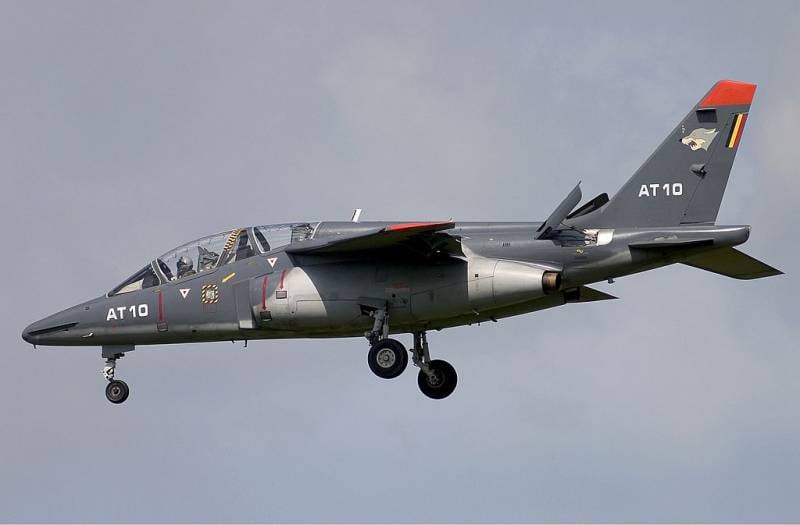
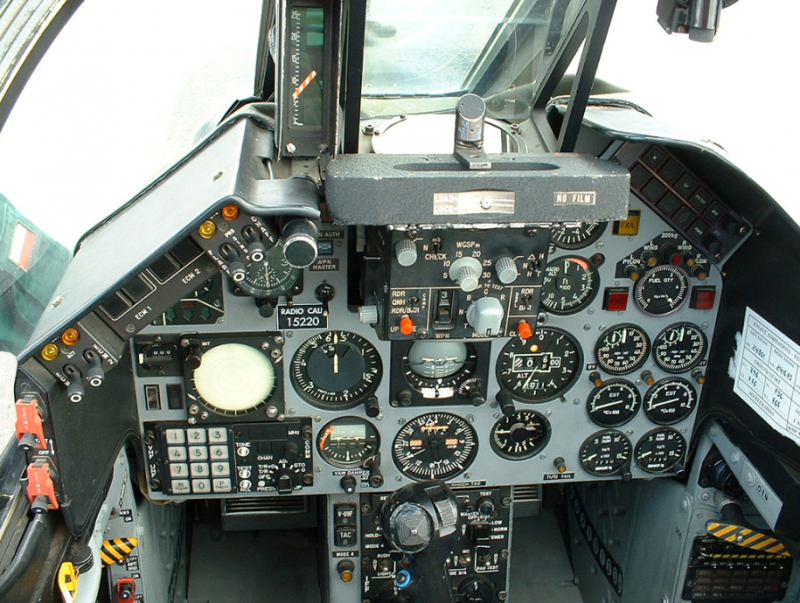
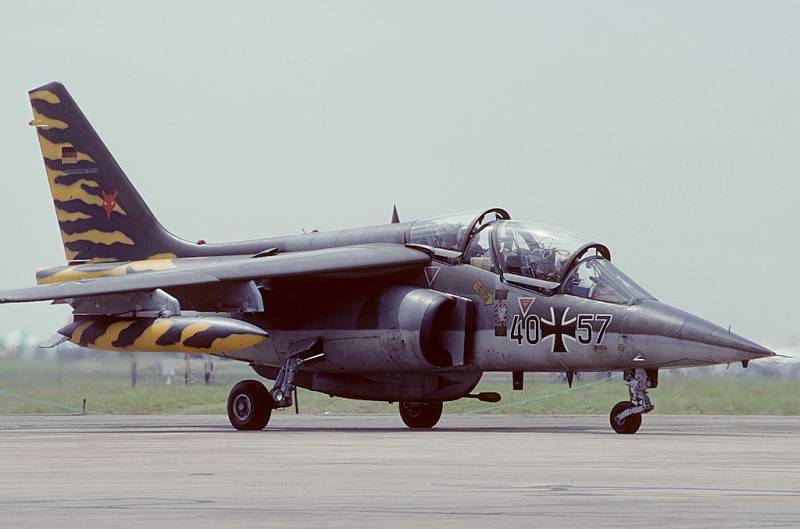
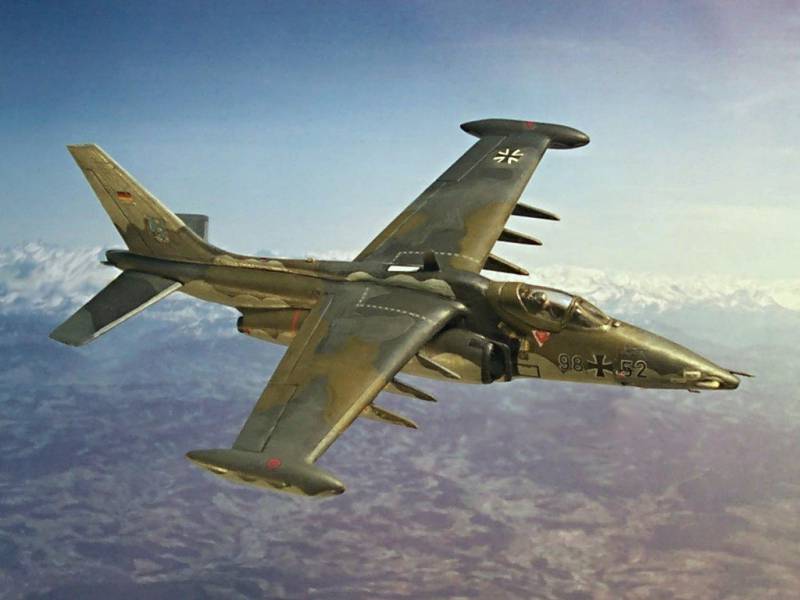
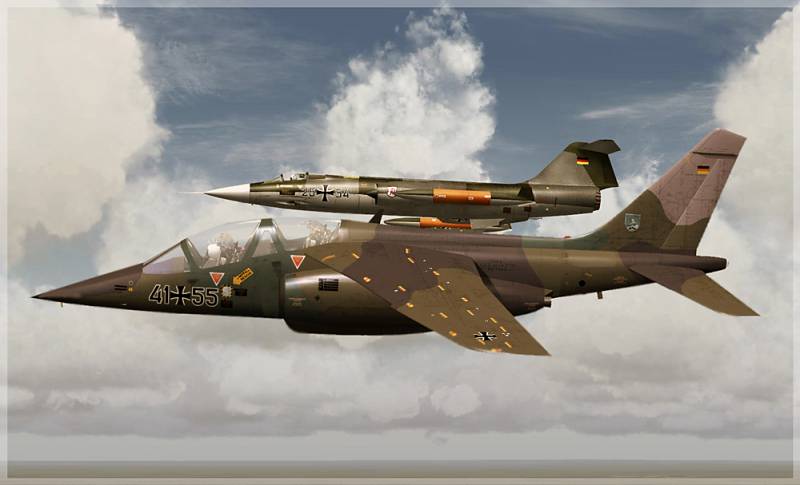

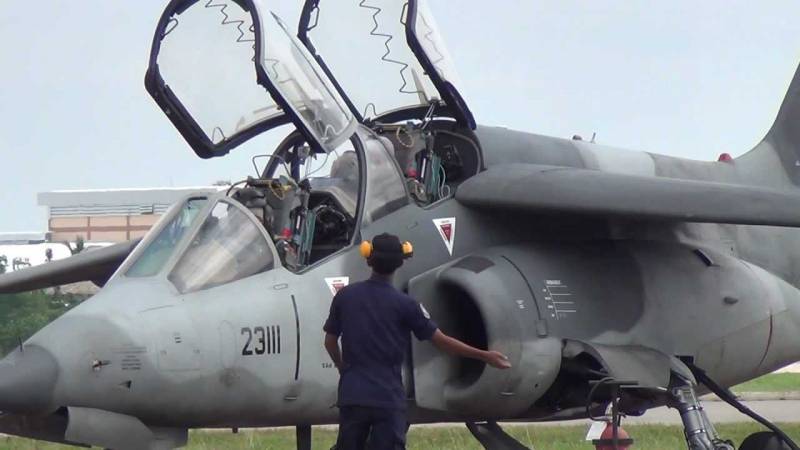
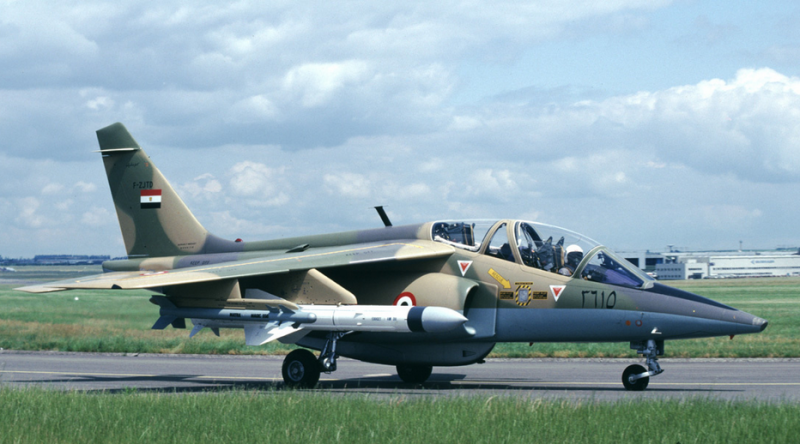
Information